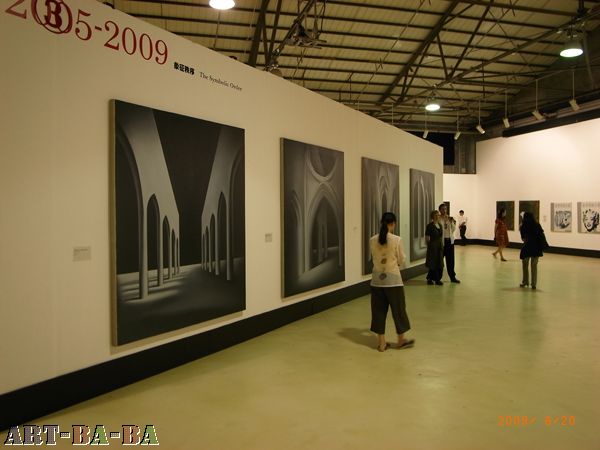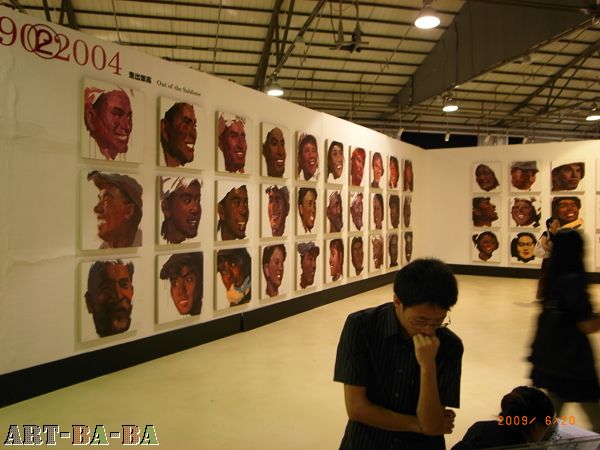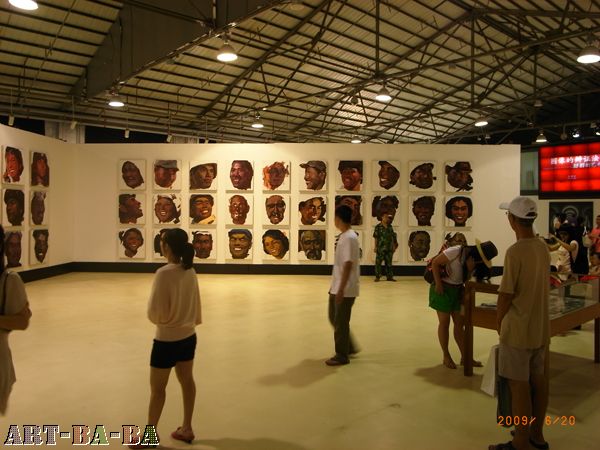[Views] Isabelle Huppert: Woman of Many Faces

Image Dialectic: The Art of Shu Qun
Text source: "Artist shows the evolution of rationale", by Newman Huo. Shenzhen Daily website.
ON the contemporary Chinese art stage, Shu Qun is quite a unique person: He is more like a philosopher than a professional artist.
If audiences try to grasp the meaning of his paintings, they have to understand the philosophy that underlies much of his works.
The exhibition, “Image Dialectic: The Art of Shu Qun,” which is being staged at the OCT Contemporary Art Terminal through August 20, aims to give art lovers a better understanding of Shu's art world.
The exhibition includes nearly 50 representative works created in different periods since the early 1980s. Most of the works on display are on loan from private collectors or organizations such as “China Minsheng Bank” and “The Guy & Myriam Ullens Foundation of Switzerland.” Those works are divided into three parts, “Absolute Principles,” “Out of the Sublime” and “Symbolic Order,” which give a comprehensive presentation of the rationale behind the evolution of Shu’s paintings over the past three decades. According to art critic and curator Huang Zhuan, the exhibition is “both a case study of Shu’s art and an academic review of the historical development of contemporary Chinese art since the 1980s.”
Born in 1958 in Jilin Province, Shu graduated from the Chinese painting department of the Luxun Academy of Fine Arts in 1982. In 1988, he became a lecturer in the department of architecture at Wuhan University in Hubei Province. He has been teaching art history and design at Southwest Jiaotong University in Chengdu, Sichuan Province sine 2000. One of the main organizers of the new art movement “Northern Art Community” in the 1980s, Shu has strongly advocated “rational painting,” which the artist called “a cool and cold artistic style based on the aesthetics of industrial civilization rather than traditional Chinese agricultural civilization.” From the 1980s through the 1990s, Shu read all the Chinese translations of major modern Western philosophical works that were popular in academic circles on the Chinese mainland.
In the “Absolute Principles” period (1983-1989), Shu’s thinking featured a mixture of the Platonic and Hegelian metaphysical model, Nietzsche’s superman philosophy, Rousseau’s revision of political authority and Jasper’s and Heidegger’s existentialism. The artistic concepts of medieval churches, metaphysical paintings of Theodore Géricault and the neo-plasticism of Piet Mondrian, gave birth to the abstract and cold visual forms of “rational painting” seen in Shu’s works, such as the “Endless Road,” “Absolute Principles” and “Wading towards the Opposite Shore.”
The “Out of the Sublime” period (1990-2004) marked the antithetical phase in Shu’s “rationalist” artistic career. He calls the period the “fall of the sacred.” His reading into logical positivism, linguistic analytical philosophy, critical rationalism and even deconstructionism led to dramatic changes in his thinking. In his own words, Shu “moved from being an existentialist to being a positivist and then a structuralist.” This change in thinking was embodied in his paintings through the emergence of analytical, even pop linguistic composition.
His works, such as the “Dispersal of Absolute Principals,” “Voices of Identity-Order of Religious Discourse,” “Voices of Identity-Post-Vanguard Doctrine,” and “Cultural Pop Series: Cui Jian,” implied “a shift from the ideologically embellished Absolute Principles to the wholly unembellished voices of identity.” Around 2002, Shu created his somewhat expressionist works, such as the “Monotone Workers,” “Peasants and Soldiers,” and “Red Mao Zedong.”
Beginning in 2005, Shu began his criticism of the pitfalls of commercialism and consumerism prevailing in Chinese society’s market economy of today and brought his art into the “Symbolic Order” period (2005-2008).
Works from this period, such as the “Symbolic Order” series, were simply images of Western churches or cathedrals, which remind audiences of a replication of the abstract and cold visual forms from the previous “Absolute Principles” period.
“In recent years, I noticed a common social phenomenon that many people felt spiritually empty even after becoming wealthy,” Shu said. “This has motivated me to rethink the value of rationalism.”
Dates: Through August 20.
Hours: 10 a.m.-5:30 p.m. Closed Monday
Add: OCT Contemporary Art Terminal, Enping Road, Overseas Chinese Town (华侨城恩平路OCT当代艺术中心)
Metro: Hua Qiao Cheng Station (Overseas Chinese Town Station, 华侨城站), Exit A. Around five minutes?walk along Enping Road.
























